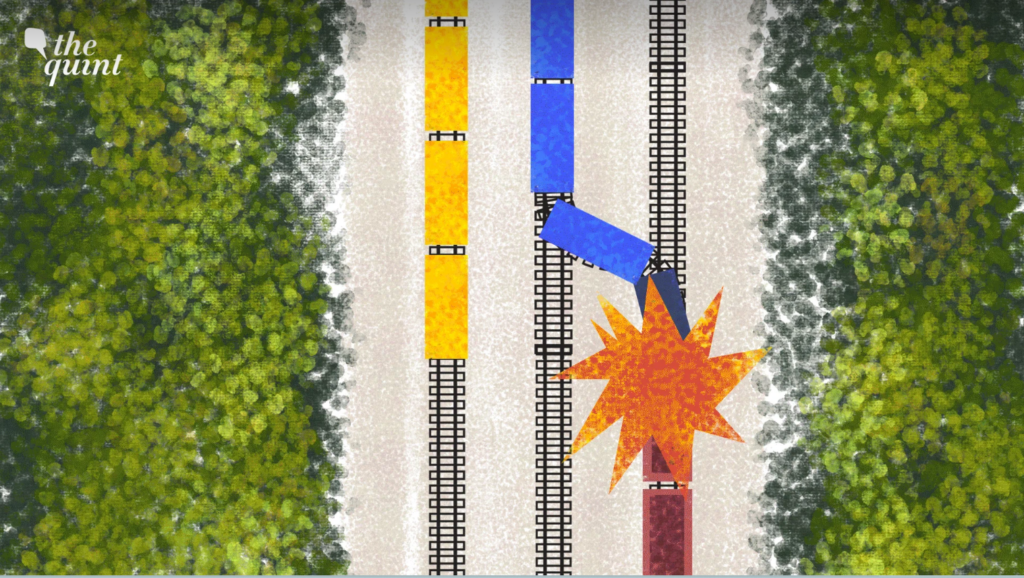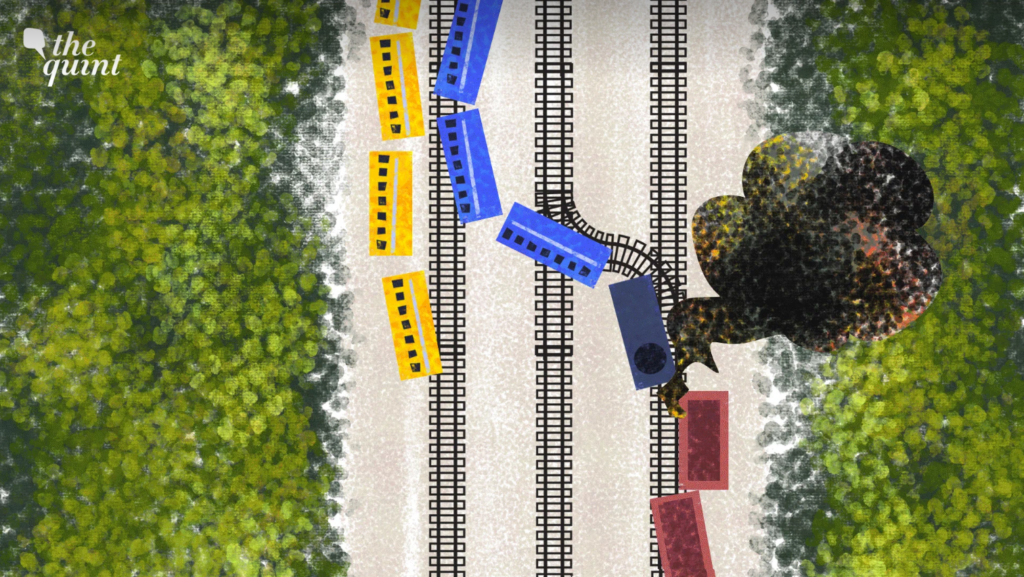On 2 June, a triple train crash was reported at Bahanaga Bazar Railway station in Balasore, Odisha. The crash involved a goods train and 2 passenger trains, the Shalimar-Chennai Coromandel Express and the Bengaluru-Howrah Express. The deadliest accident in two decades claimed the lives of 288 people and injured around 1100.
The preliminary investigation revealed that the possible reason for the accident was a signalling problem. Railways Minister Ashwini Vaishnaw said a “change in the electronic interlocking” system led to the accident. According to some railway authorities, the Electronic Interlocking System was fail-safe, which means that even if the system failed, all signals would turn red, putting all trains to a halt. They alleged human intervention as the cause of the system’s failure. On 6 June, the investigation was taken over by India’s federal agency – the Central Bureau of Investigation from the Odisha police. According to government officials, every possibility will be looked at, including sabotage, human negligence, and mechanical fault.
ELECTRONIC INTERLOCKING SYSTEM
Before analysing the possible scenarios that could have happened, it is important to understand the ‘Electronic Interlocking System’. It is a safety mechanism that uses software components such as computers, programmable logic controllers, and communication networks to ensure safe and efficient supervision of train movements at railway junctions.
Additionally, it ensures that signals to move forward are only approved when the track ahead is clear. To identify the presence and location of trains on the tracks, it uses sensors and feedback devices. It regulates rail traffic, thus enabling trains to change tracks safely.
SWITCH POINTS, SIGNALS, AND TRACK CIRCUITS
Switch points, signals, and track circuits are primarily integrated into the system to allow for smooth train movement. The coordination of these components is necessary to operate trains without any mishaps.
- Trains change from one track to another using switch points, which are movable sections of a track.
- Track circuits are installed to detect a train’s presence on tracks. It determines if a track is occupied or vacant and works in synchronization with switch points.
- Thus, the main purpose of the system is to delay the signal for a train to move forward until the route is safe. Essentially, it determines the track a train should use. This method ensures that no train ever tries to pass a track that has already been occupied by another train.
2 JUNE, 2023
On 2 June, at the time of the accident, the goods train was stationed on the loop line while the Coromandel Express bound for Chennai was travelling on the ‘up main line’. The Howrah Express from Bangalore was travelling in the opposite direction towards Howrah on the adjacent ‘down main line’. Both the trains were travelling at their full permitted speed of 128 km/h (80 mph).

Initially, the Coromandel Express received a ‘green signal’ to proceed on the main line it was arriving on. However, for reasons unclear, the signal was removed from the main line and the route was transferred to the nearby loop line. This was the point where there was either an improper routing or a signalling error- both under the control of the Electronic Interlocking System. Again, it is noteworthy to remember that the system’s primary function is to ensure that at no point is one train attempting to get on a track which is already occupied by another train.

Around 19:20 hours (local time), the ill-fated Coromandel Express collided with the freight train. Due to its high impact speed, 22 coaches of the train were derailed from the main line near Bahanaga Bazar station.

The oncoming Bengaluru-Howrah Express had nearly passed the Coromandel Express in the opposite direction when three of the latter’s derailed coaches slammed across the adjacent track and collided with the Bengaluru-Howrah Express’s rear end, derailing its last two unreserved coaches.

Restoration operations were undertaken immediately, and train services resumed on the tracks after 51 hours. As of 7 June, more than 100 bodies remain unidentified due to its unrecognizable state. Besides, the task of identifying passengers in the unreserved compartments would take time, making the challenge all the more difficult. It is reported that DNA sampling would be done to identify these unclaimed bodies.
For more travel safety updates, stay connected to Sitata through its various platforms. (Facebook, Instagram, Linkedin)
References
https://indianexpress.com/article/explained/how-did-the-odisha-train-crash-happen-8644109/



